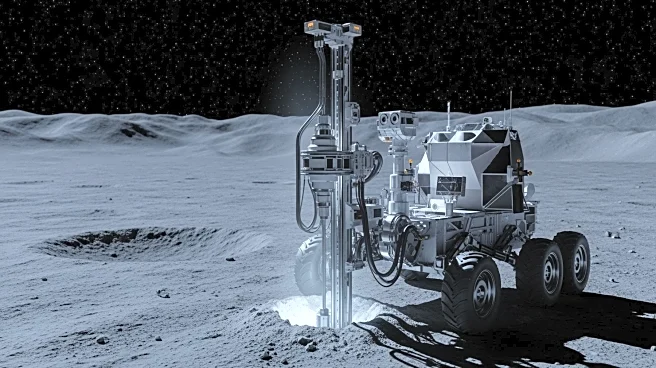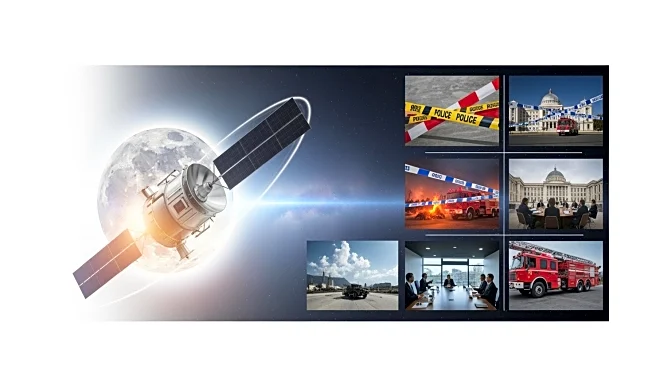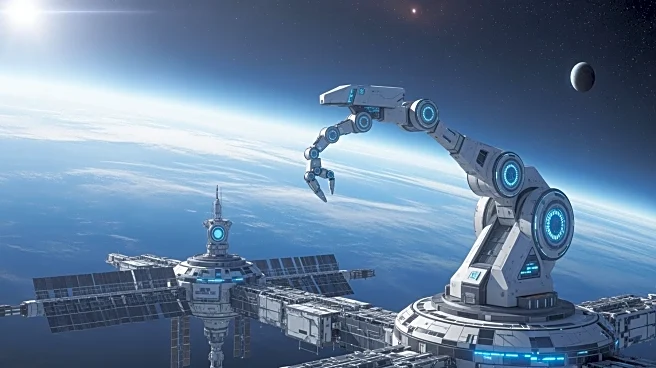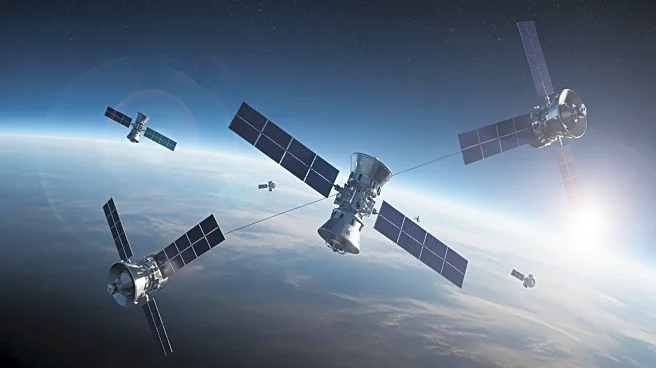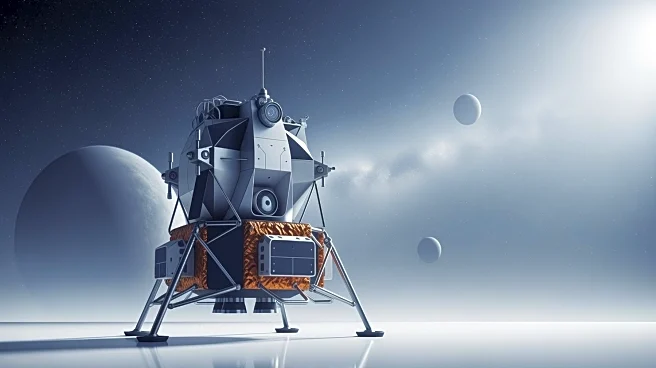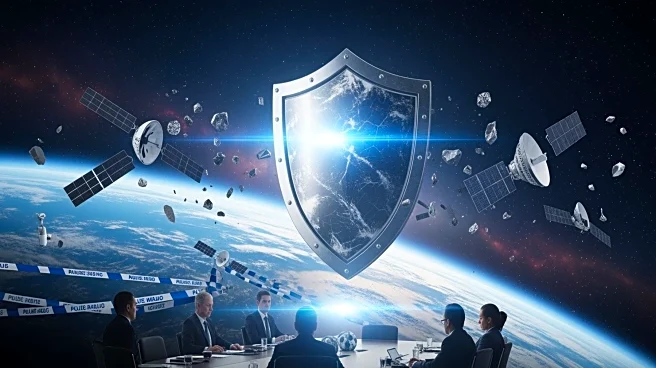What's Happening?
The Chinese National Space Agency has announced that its Chang'e 7 spacecraft is scheduled to launch in August, potentially outpacing U.S. efforts to extract water from the Moon. The mission includes a relay
satellite, orbiter, lunar lander, rover, and a mini-flying probe, all equipped with scientific instruments to study the lunar surface. The mini-flying rover will specifically analyze lunar soil for water molecules. This mission follows China's successful Chang'e 5 and 6 missions, which returned lunar samples. The U.S. had aimed to be the first to mine lunar water ice, but recent setbacks have delayed its efforts.
Why It's Important?
China's advancements in lunar exploration could shift the balance of power in space exploration, challenging U.S. leadership. Successfully extracting water from the Moon would be a significant achievement, potentially supporting future lunar bases and deep space missions. This development highlights the competitive nature of space exploration, with countries vying for technological and strategic advantages. The U.S. may need to accelerate its lunar missions to maintain its position in space exploration, impacting NASA's priorities and funding allocations.
What's Next?
As China prepares for its August launch, the U.S. will likely reassess its lunar exploration strategies. NASA has two upcoming CLPS missions targeting a 2026 launch, which may include efforts to confirm lunar water ice. The international space community will watch closely as these missions unfold, potentially influencing future collaborations and competition. The outcome of China's mission could also affect global space policy and the allocation of resources for lunar exploration.
